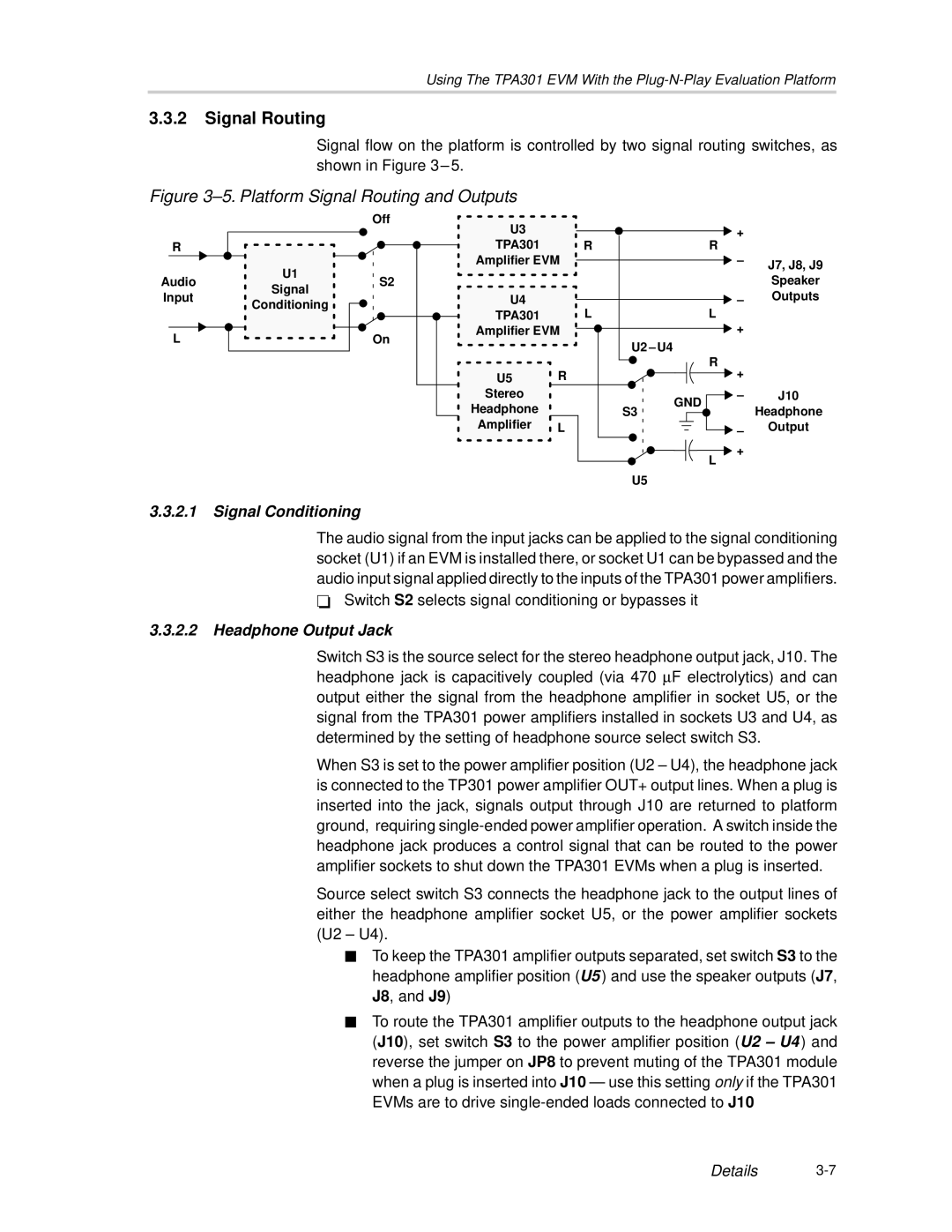TPA301 specifications
Texas Instruments TPA301 is a highly efficient, low-power audio amplifier designed for portable audio applications. This device is particularly well-suited for mobile phones, tablets, and other compact audio systems where space is limited but sound quality remains a priority. The TPA301 sits at the intersection of advanced audio technology and user-friendliness, making it a go-to choice for designers seeking a high-performance solution.One of the main features of the TPA301 is its Class D architecture, which offers superior energy efficiency compared to traditional Class AB amplifiers. This means that less power is wasted as heat, allowing for longer battery life in portable devices. The TPA301 delivers up to 1.5W per channel into an 8-ohm load at low-distortion levels, ensuring that consumers experience clear audio reproduction, even at high volumes.
Furthermore, the TPA301 integrates several advanced technologies, including a built-in digital signal processor (DSP) that enables sophisticated audio processing capabilities. This DSP allows for features like active noise cancellation and equalization, enhancing the listening experience by tailoring the audio output according to the environment. The device also supports various audio inputs, including I2S, PCM, and TDM formats, providing design flexibility for developers.
The TPA301 is designed with a focus on compactness and thermal management, featuring a small package size that makes it ideal for space-constrained applications. Additionally, its low quiescent current contributes to minimal power consumption when the amplifier is in standby mode, making it a perfect fit for portable gadgets where battery longevity is critical.
Another notable characteristic of the TPA301 is its robust protection features, including over-temperature protection, short-circuit protection, and under-voltage lockout. These safety mechanisms ensure reliable operation under various conditions, protecting both the amplifier and connected speakers from damage.
In summary, Texas Instruments TPA301 stands out as an efficient, compact audio amplifier designed specifically for portable applications. Its combination of Class D efficiency, built-in DSP capabilities, wide audio format support, and comprehensive protection features make it an excellent choice for designers aiming for high-quality audio in a small footprint. Whether in smartphones or tablets, the TPA301 ensures consumers enjoy an unparalleled audio experience.

